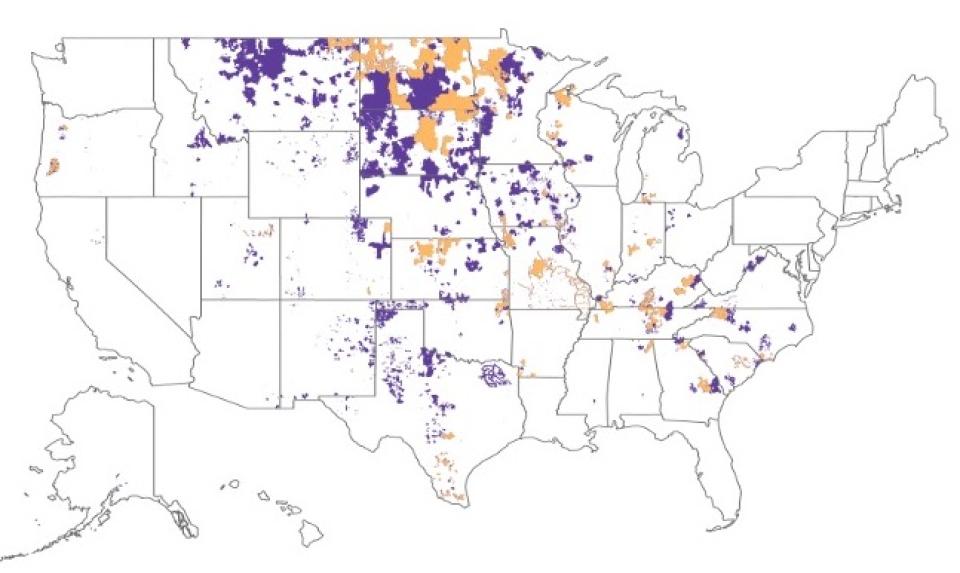
Fast, affordable Internet access for all.

Rural communities across the United States are already building the Internet infrastructure of the future. Using a 20th century model, rural America is finding a way to tap into high-speed Internet service: electric and telephone cooperatives are bringing next-generation, Fiber-to-the-Home (FTTH) networks to their service territories. This policy brief provides an overview of the work that cooperatives have already done, including a map of the cooperatives' fiber service territories. We also offer recommendations on ways to help cooperatives continue their important strides.
Download the policy brief, Cooperatives Fiberize Rural America: A Trusted Model For The Internet Era here.
This report has been updated since we originally published it in 2017. More recent versions of the report can be accessed from the Reports Archive Page.
Key Facts & Figures
Farmers first created utility cooperatives because large private companies did not recognize the importance of connecting rural America to electricity or telephone service. Now, these cooperatives are building fiber infrastructure.
Almost all of the 260 telephone cooperatives and 60 electric cooperatives are involved in fiber network projects. As of June 2016, 87 cooperatives offer residential gigabit service (1,000 Mbps) to their members.
Rural cooperatives rely on more than 100 years of experience. The cooperative approach does not stop with rolling out rural infrastructure, but ensures that their services remain viable and affordable.
The majority of Montana and North Dakota already have FTTH Internet access, thanks to rural cooperatives. Even one of the poorest counties in the country (Jackson County, Kentucky) has FTTH through a telephone cooperative.
AT&T receives about $427 million each year in rural subsidies to bring Internet service to rural America, but AT&T does not invest in rural fiber networks.
Moving Forward
Our policy recommendations offer an outline of how to build off of this work and further support rural cooperatives:
1. Design funding programs with cooperatives in mind. Recognize what requirements make sense for large organizations and what is unnecessary for cooperatives.
2. Activate membership based in existing cooperatives. Successful cooperative projects are community-led projects. About 70 percent of electric cooperatives have less than 10 percent average turnout for their board member elections.
3. Encourage cooperatives by removing barriers and encouraging partnerships.
4. Highlight potential rural uses. Rural areas are home to more than farmers. There may be aspiring programmers and entrepreneurs, and many people who want higher education as well.
Cooperatives Fiberize Rural America: A Trusted Model For The Internet Era here.
